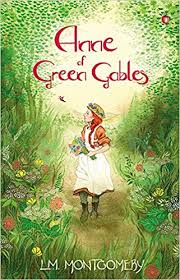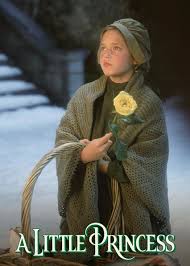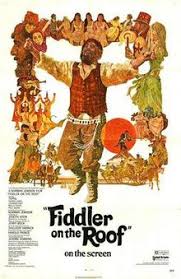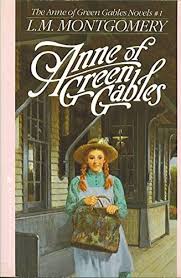How We Connect With God
- Kelsey
- Jan 24, 2020
- 9 min read
Updated: Mar 29, 2020
I’m sure this isn’t an isolated experience: you’re visiting a church and you just… can’t… connect. Or in an effort to revamp your spiritual life, you read a theological commentary and… well, you learn a lot, but you don’t find yourself closer to God. Or perhaps over coffee your friend declares that there’s precious little that can get the spiritual blood going faster than defending God’s cause for equal rights! Maybe none of these situations have hit home, but it’s likely at some point you’ve asked yourself “Why can’t I connect to God like everyone else? Am I a bad Christian that I don’t feel closer to God when I do (fill in the blank with something pious)?” Gary Thomas, author of Sacred Pathways assures us that we’re not alone. Instead, you likely haven’t discovered your soul's path to God.

Thomas posits there are nine sacred pathways. Very similar to how one might be naturally inclined towards the maths and sciences, or the arts, or athletics, so the individual tends towards certain ways of worship and devotion. That is not to say a jock cannot love to paint, or an artist cannot find themselves mentally invigorated when they study physics- by no means! But God has created us to be unique individuals with passions, quirks, and interests, so doesn’t it make sense the way we connect with God might not be a one-size-fits-all approach? Thomas presents nine sacred pathways: The Naturalist, Sensate, Traditionalist, Ascetic, the Activist, Caregiver, Enthusiast, Contemplative, and the Intellectual. I will give a short summary of each and a fictional character who I believe may represent such temperaments. The book offers endless examples, but I will supply my own, in part because I didn’t know half the historical names Thomas gave.
But mostly because my future readers will be tweens, and I think it will be fun.
Naturalists: Loving God Out of Doors
The Naturalist will likely feel closer to God walking in the woods, or looking at the stars. Sitting in the office, car, or church aisle for long periods of time will leave them restless and stifled, longing to be out of doors and basking in creation. Anne Shirley from Anne of Green Gables is likely a Naturalist, as she declares to her adoptive mother, Marilla Cuthbert: “I'd go out into a great big field all alone or into the deep, deep, woods, and I'd look up into the sky--up--up--up--into that lovely blue sky that looks as if there was no end to its blueness. And then I'd just feel a prayer.” On her first Sunday at church, she can’t resist bringing nature inside with her, adorning her hat with roses and buttercups. Later Marilla chastises her for covering her bedroom with autumn leaves.
Sensates: Loving God with the Senses
If you love the incense burned during the feast of All Saint’s Day, if you relish the texture of the kneelers, the cold stone of the pillars, and the sweet and bitterness of communion… If you see something beautiful and immediately praise God, you’re probably a Sensate. A blank piece of paper and colored pencils are a personal challenge. If things are too plain, you have three choices: Make it interesting, leave, or perish in underwhelming agony. Sara Crewe from Frances Hodgson Burnett’s A Little Princess shows Sensate tendencies throughout the book but especially in the stories she tells others. Locked away in an attic, she tells her friend and fellow servant Becky about meals that melt in your mouth, clothes warm and soft to the touch, and beautiful music and the smell of spices she was so fond of in India. Later when she is rescued from the slums, she doesn’t talk about being alone or unloved, she remembers the cold, hunger, and ugliness of where she was, and how she tried to live above it.
Traditionalists: Loving God Through Ritual and Symbol
The love of liturgy is for in the Traditionalist. A Traditionalist at heart raised in a non-denominational church will likely find themselves come alive like never before the day they enter an Episcopal or Anglican church. The musical Fiddler on the Roof begins with the powerful opening number “Tradition!” with our main character, Tevye telling the audience that Tradition gives him and his Jewish people structure, guidance, and a purpose. Whenever he’s in doubt as to what he should do as he runs his home or loves his daughters, he turns to God under the repetitive structure of tradition. Even when he’s at a loss, he knows he can find his answer in the scriptures and the faith traditions that form who he is.
Kelsey’s note: I am having trouble finding a fictional character a child might more readily know.
Ascetics: Loving God in Solitude and Simplicity
The Ascetic is the most likely to tell you how much they’re looking forward to their silent retreat. They don’t like their quiet time- they NEED it! Their best friends or spouse have already had to tell them on more than one occasion that becoming a hermit is not an option. Of all the types, the Ascetic is the most likely to talk about “inner peace” without being ironic. In A. A. Milne’s video adaptations of Winnie the Pooh, there is a cartoon episode where Piglet calls a meeting with all of his friends to discuss something troubling: Every evening, Eeyore sits on the hilltop, alone! The friends band together and vow to cheer him up. Tigger tries to teach Eeyore to bounce, Pooh stuffs him full of honey, Owl ties balloons to him so he can fly… but nothing helps! At the end of the day, Piglet, utterly defeated, approaches Eeyore to apologize that he can’t make him happy. Eeyore brightens, (removes his precautionary football helmet), and tells Piglet that he doesn’t come to this hill because he’s sad- he does it because he’s happy! He enjoys sitting in the silence, taking in the sky, and thinking about life. He doesn’t need honey, bouncing, balloons, parties, or loud noise… He loves the stillness he’s found. Eeyore invites Piglet to sit beside him, and they are at peace. Many stories emphasize the need to get out there, to leave your comfort space, and there’s certainly room for that. But for the Ascetic, to unplug and be alone in the silence is needed to truly connect with that Still Small Voice.
Activists: Loving God Through Confrontation
This is someone who feels closest to God defending His cause. If you’ve ever been to a rally, the organizer is most definitely an Activist. Prince Caspian X, from C. S. Lewis’ Chronicles of Narnia would likely fall into this category. He hears the stories of the Old Narnia and as soon as he learns they’re still alive, he dedicates his life to defending their cause and justice. As a king he sails off in search of people unjustly exiled by his uncle. During his adventures he learns slavery is still active on the islands and abolishes it. He rides under the banner of The Lion, and so long as there is a wrong in the world, he will not rest until it is made right.
Caregivers: Loving God by Loving Others
Perhaps the easiest to understand, the Caregiver meets God in caring for others. This person is likely found in your special needs Sunday school classroom, or working in a nursing home. Anywhere where there are people who need special love. Dickon Sowerby from Frances Hodgson Burnett’s The Secret Garden is a wonderful example of the Caregiver (and the Naturalist!). Dickon shows his Caregiver spirit in the way he tends the animals he finds, how he takes Mary under his wing, and later encourages Collin to take his first steps. When Mary tells her cousin’s doctor she wants to take Collin out of doors, and she reveals Dickon will be with them, the doctor, though initially reluctant, immediately allows it. He later remarks that he would trust Dickon with a new born baby.
Enthusiasts: Loving God with Mystery and Celebration
The Enthusiasts (and Contemplatives) are the biggest feelers in the bunch. They need to feel alive as they worship. It’s not enough to stand there and sing with the hymnal, they need to raise their hands into the air, or dance. Maybe tear up a little during the final verse of “In Christ Alone.” If things aren’t going well, the Enthusiast is already waiting with excited certainty that God is going to do something. Again, I would describe Anne Shirley from Anne of Green Gables. When we first meet her, she is waiting excitedly for Matthew Cuthbert to come and take her home. She tells him she knew he would come, and if he didn’t, she would sleep in the cherry tree, not a bit afraid. Later as she looks at a picture of Jesus blessing the children, she imagines that she is one of them and is carried away with enthusiasm.
Contemplatives: Loving God Through Adoration
The contemplative defines themselves by their relationship with God. They may address God as “Dad” and speak to Him like a best friend. Above any cause, calling, or service, what matters most is the closeness and love they give and receive from Jesus. Lucy Pevensie, also from C. S. Lewis’ Chronicles of Narnia, is a very tender depiction of the Contemplative. She feels closest to Christ (portrayed by the great lion Aslan) when she is sitting between his paws. She speaks to him lovingly and frankly. When she sees him, her first instinct is to run up and hug him. When she and Edmund are told they will never return to Narnia she bursts into tears because she is afraid she will never be with Aslan again, who quickly assures her that he IS in her world, but under a different name. Lucy (who was possibly also an Ascetic) frequently separated herself from others to be alone, and was known to go off in search for Aslan. Her siblings often remark that Lucy sees Aslan more than the others, probably because she’s always so busy looking for him!
Intellectuals: Loving God with the Mind
It is helpful to know that the Intellectual is NOT heartless… but even they sometimes might forget. They aren’t cold, just more mindful. If you ask a friend what’s going on in their relationship with God, and they respond that they’ve been rereading the writing of St. Augustine and comparing it to the entire works of John Calvin whilst comparing both to how they differ from the writings of Paul, and they’ve never felt so alive…! They’re likely an Intellectual. Eugene Meltsner from Focus on the Family’s Adventures in Odyssey is a comically enjoyable representation of what it may mean to be an Intellectual. Eugene grows closer to God by reading about Him. Conversing with others about history, theology, and ultimately what it means for his mind. As he speaks with his boss and mentor, John Avery Whittaker, he’s frequently reminded to let his heart also guide him closer to God. Eugene is often confused, because his heart is an organ that pumps blood, so what does his heart have to do with anything? The Intellectual may forget to let their heart in on things, but they also likely contributed some of the greater works of theology.
Our Turn!
To take the free, online Sacred Pathway Test, follow the link:
Thomas’s book also supplies the test, which is how I took it. Out of a possible 30 points, I ranked as the following:
High Ranking
Contemplative: 29. Enthusiast: 27. Sensate: 23. Naturalist: 20
Neutral/Low Ranking
Caregiver: 16. Traditionalist: 15. Intellectual: 15. Ascetic: 8. Activist: 7
My eventual ranking was intriguing… Initially I assumed Caregiver would be at the top of the list because I’m always elbow-deep in some form of service. However, taking a look at it through the eyes of how we naturally feel closer to God (and not validated by others) I recognized taking care of others was fairly neutral as far as connecting to God goes. I also found it interesting that I would by no means label myself an Activist (neither did the test, note I scored lowest there), and yet my work in school to create materials for self-harmers because there’s a distinct lack of it could be seen as a quiet form of activism. I knew from the get-go that no fair reading could rank me an Ascetic, as the concept of silent retreats terrify me. On the flip side, whenever I journal (my primary form of prayer) I call God “Abba” which apparently is not uncommon for a Contemplative. It also struck me how my Contemplative and Enthusiast natures complimented each other (bringing intimacy and passion together), as did the Sensate and Naturalist (after all, nature is full of elements that captivate the senses). I would be interested to see if other people had spiritual temperaments that naturally contrasted (an outspoken Activist who was also a withdrawing Ascetic, or perhaps an intimate Contemplative AND a brainy Intellectual…).
Looking into the future, I think I might present a chapter for my readers that offer simple summaries of the types (like above) and suggest two or three activities per type for someone to try. If they find themselves especially drawn to anything in particular, encourage them to make a small plan for how to incorporate this form of worship to better connect with God.
Again, the thing that stands out is this is how we naturally feel closer to God, and NOT validated by others.
That’s the Enneagram, and that report is coming...
























































Comentários